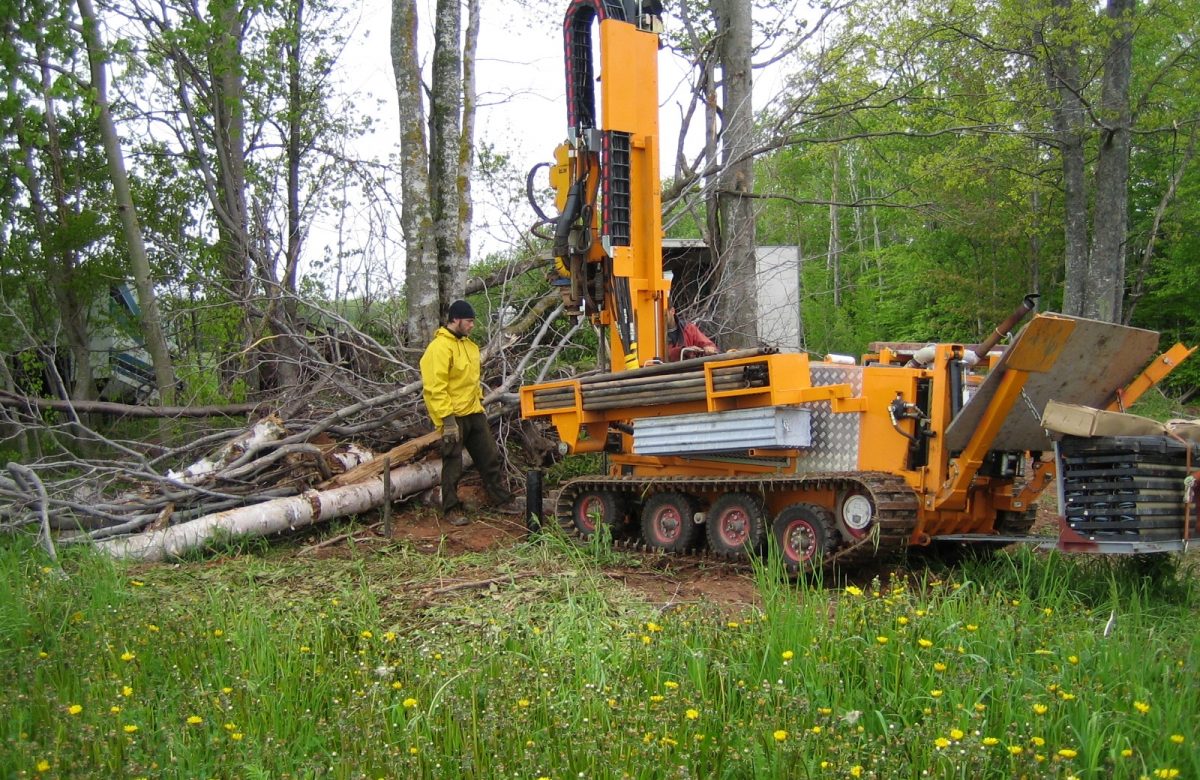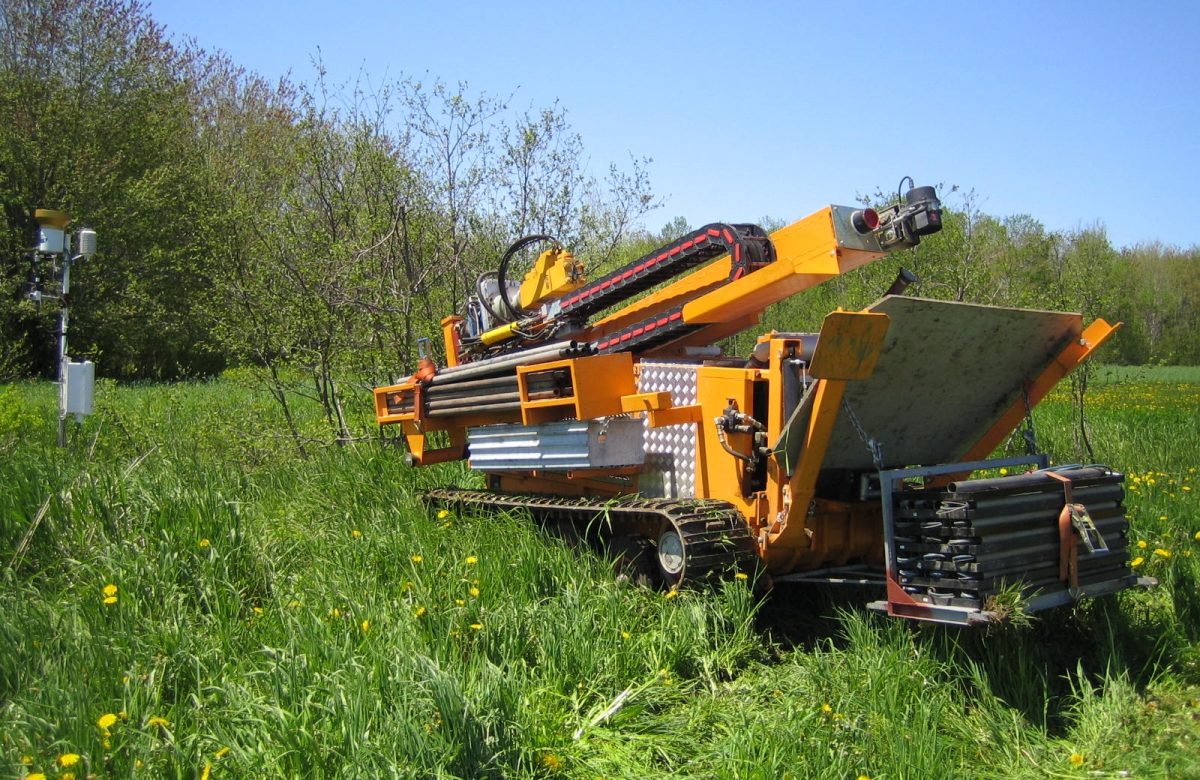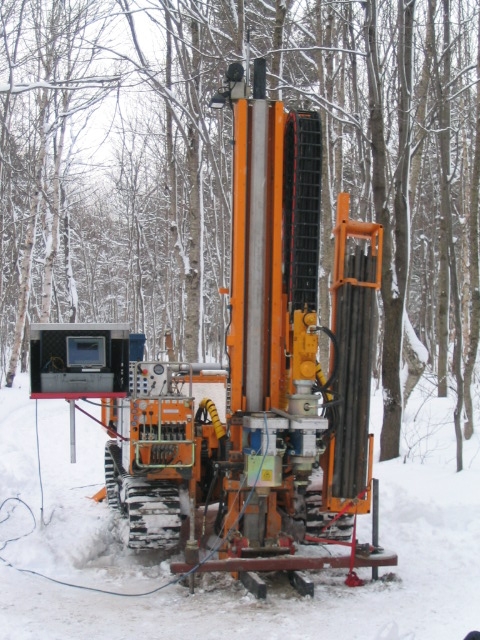The Direct Push and Rotary Percussion Sounding System is used in geological, hydrogeological, geotechnical, and geothermal characterization studies on groundwater resources and contaminated sites.
The Geotech 605D geotechnical drill rig and sounding equipment can be used to conduct direct push soundings such as piezometer tests, a type of cone penetration test (CPTU), as well as rotary percussion soundings in soils or rock masses. The system can be used to sample soil and water and conduct permeability tests without installing permanent observation wells. Light-weight piezometers can also be installed using this system.
- Two interchangeable drill heads
- Percussion drill head. Maximum capacities: torque 2.5 kN, drive-down force 72 kN, extraction force 132 kN, rotation speed 80 rpm
- Rotary drill head. Maximum capacities: torque 2.5 kN, rotation speed 80 rpm
- A rotary percussion sounding system (RPSS) with hydraulic hammer
- Two air compressors for rotary percussion soundings
- A high-pressure water injection system with a 900-litre tank for rotary percussion soundings
- Sensors for recording push load,rotation pressure and speed, the depth and number of hammer blows, and hammer pressure
- A multi-screw anchoring system for direct push soundings (CPT)
- Data acquisition system for RPSS and CPT
- Sensors for RPSS measurements
- CPT with inclination and SMR (soil moisture resistivity)
- ConeSipper for sampling air or water (other water samplers available)
- Bladder pump
- Sampling system equivalent to the Geoprobe Profiler
- Hydraulic perforated tip profiling system for sampling water or conducting permeability tests
- System for conducting pneumatic permeability tests
- System for cementing holes
- CPT: sleeve friction, tip resistance, water pressure, inclination
- SMR: resistivity, water content (in unsaturated zone)
- Cone penetration test stratigraphy
- Determination of hydraulic properties (hydraulic gradient and conductivity)
- Water sampling
- Determining stratigraphy by CPT and RPSS requires that the results of the soundings first be checked against conventional drilling with soil sampling (at least two different locations) to identify the signature of the different formations.
- CPT and RPSS measurements and results from the permeability tests using the hydraulic profiling system require professional analysis.
- A number of constraints can prevent direct pushing (bedrock, till, gravel with boulders, etc.).
- Direct push installation of observation wells (without drilling) with pre-installed well screens made of tubing that allows direct installation in the granular formation, i.e., without a gravel filter around the well screen.
- Determining the mechanical properties (strength) of materials, identifying materials (stratigraphy) with very good vertical resolution, measuring soil water pressure, determining the hydraulic conductivity of fine materials during pressure dissipation tests, and identifying fluids with distinctive salinity (resistivity)
Contacts
Richard Martel
Professor and Scientific head
Phone: 418-654-2683
richard.martel@ete.inrs.ca
Boutaina El Jai
Partnerships and Research Development Advisor
Phone: 418 654-2531
boutaina.el_jai@inrs.ca
Direct Push and Rotary Percussion Sounding System
Institut national de la recherche scientifique
Eau Terre Environnement Research Centre
490 rue de la Couronne
Quebec City, Quebec G1K 9A9



